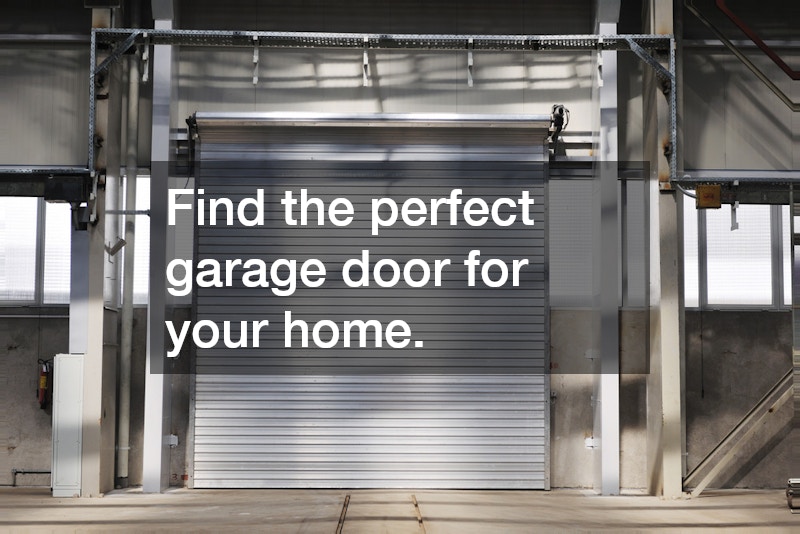
Garage doors are an essential part of modern home design, offering both security and aesthetic value. They not only protect vehicles and stored items but also play a key role in defining your home’s curb appeal. With advancements in materials and technology, homeowners today have a wide range of garage door types to choose from for their garage door installation, each with unique advantages. Whether you’re replacing an old door or building a new home, understanding the various garage door types can help you make the best choice for your needs, budget, and style.
What Are the Main Types of Garage Doors?
Sectional Garage Doors
Sectional garage doors are among the most popular options for residential properties. Made of horizontal panels connected by hinges, these doors open vertically and slide along tracks into the ceiling. This design allows for efficient use of space—ideal for homes with limited driveway room. Sectional doors often come with built-in insulation and can be customized with windows, decorative accents, and a wide variety of finishes. They are durable, weather-resistant, and offer smooth operation with either manual or automatic openers.
Roll-Up Garage Doors
Commonly found in commercial settings but increasingly popular in residential applications, roll-up doors consist of narrow steel or aluminum slats that coil into a compact roll above the opening. These doors are highly space-efficient and require minimal maintenance. Roll-up garage doors are excellent for homes with limited overhead or ceiling space and are known for their robust construction. Their sturdy design also offers enhanced security, making them a solid option for homeowners prioritizing durability and protection.
Slide to the Side Garage Doors
Slide to the side doors operate just as their name suggests—they slide horizontally along a track to rest parallel to the garage wall. This design is one of the oldest styles of garage doors and works well for garages with little headroom. They are easy to operate and often come with built-in pedestrian access, providing convenience without having to open the full door. Modern slide-to-the-side doors can be motorized for added ease, and their simple mechanism makes them reliable and long-lasting.
Side-Hinged Garage Doors
Side-hinged doors, also known as carriage-style doors, swing open outward from a hinged frame, much like traditional barn doors. They are perfect for homeowners who want a classic or vintage look that complements traditional architecture. These doors can be constructed from wood, steel, or a combination of materials, offering a customizable aesthetic. Side-hinged doors are easy to maintain and ideal for garages used as workshops or storage spaces since they allow quick pedestrian access without raising the entire door.
Tilt-Up and Over Canopy Garage Doors
Tilt-up canopy doors feature a single solid panel that tilts outward and upward, resting parallel to the ceiling when open. This design offers a clean, seamless appearance without the sectioned panels seen in sectional doors. The “canopy” refers to the portion of the door that extends outward when it’s open, creating a small overhang. These doors are known for their simplicity and affordability, but they do require space in front of the garage for opening and closing, which might limit driveway use. Homeowners who prefer a minimalist, classic look often favor tilt-up canopy designs.
Which Garage Door Material Is Best?
The material you choose for your garage door significantly affects its appearance, durability, and maintenance requirements. Here are the most common options:
Wood and Wood Composite
Wood offers timeless beauty and warmth, making it a favorite for homeowners who value natural aesthetics. It can be customized with stains, finishes, and intricate designs, allowing for a high level of personalization. However, wood requires regular maintenance, including sealing and refinishing, to prevent warping and weather damage. Wood composite doors provide a more durable alternative, combining real wood fibers with synthetic materials for better longevity and reduced upkeep.
Steel Garage Doors
Steel is one of the most popular materials due to its strength, affordability, and versatility. Steel doors can be insulated, painted, or embossed with various textures to mimic wood or other finishes. They are durable and resistant to dents, though they can be prone to rust if not properly coated. For homeowners seeking a balance of cost-effectiveness and performance, steel is often the go-to option.
Aluminum Garage Doors
Aluminum doors are lightweight and resistant to rust, making them ideal for humid or coastal environments. They can feature glass panels or sleek finishes, giving homes a modern, contemporary look. While aluminum is less prone to corrosion than steel, it can dent more easily, so homeowners should consider its placement and potential exposure to impact.
Fiberglass Garage Doors
Fiberglass doors are known for their resistance to moisture, warping, and corrosion. They can replicate the look of wood grain without the associated maintenance, making them an attractive and low-maintenance choice. Fiberglass is also lightweight, which can extend the life of your garage door opener. However, it can become brittle in very cold climates, so it’s best suited for moderate or warm regions.
Vinyl Garage Doors
Vinyl garage doors are highly durable, dent-resistant, and virtually maintenance-free. They are ideal for families or high-traffic homes where the garage is frequently used. Available in various colors and finishes, vinyl doors resist rust, corrosion, and fading, making them a long-lasting option for homeowners looking for durability with minimal upkeep.
What Are the Insulation Options for Garage Doors?
Proper insulation enhances a garage door’s energy efficiency, soundproofing, and temperature control—especially if your garage is attached to your home or used as a workspace.
Understanding R-Values
The effectiveness of garage door insulation is measured by its R-value. A higher R-value indicates better insulating performance. Insulated doors help maintain stable indoor temperatures, reduce energy costs, and minimize noise from outside.
What Is R-Value?
R-value refers to the material’s resistance to heat flow. For example, a door with an R-value of 16 will insulate better than one with an R-value of 6. Choosing the right R-value depends on your local climate and how you use your garage.
Types of Insulation for Sectional Doors
Sectional doors typically use polystyrene or polyurethane insulation. Polystyrene panels provide good basic insulation, while polyurethane is injected into the panels for superior energy efficiency, soundproofing, and strength.
Insulation Solutions for Roll-Up Doors
Roll-up doors often feature foam-filled slats or back-insulated curtains. These options reduce heat loss while maintaining the door’s compact, rolling function—ideal for garages that need both insulation and minimal ceiling interference.
Insulation for Slide to the Side Doors
Slide-to-the-side doors can be fitted with insulated panels or internal foam linings. Sealing along the tracks and edges further improves their energy efficiency and helps block drafts.
Side-Hinged and Tilt-Up Door Insulation Tips
Side-hinged and tilt-up doors can benefit from foam board insulation attached to the inner surface. Weatherstripping around the perimeter can enhance efficiency, ensuring consistent temperature control and reducing energy costs.
Conclusion
Choosing the right garage door for your home involves more than just selecting a style you like. It’s about finding the perfect combination of functionality, material, insulation, and aesthetics. Sectional and roll-up doors offer modern convenience and space efficiency, while side-hinged and tilt-up options provide classic charm. The material you choose, whether it’s the natural beauty of wood, the strength of steel, or the resilience of vinyl, should align with your home’s architectural style and maintenance preferences. Finally, insulation and R-value considerations can help you improve energy efficiency and comfort.
By understanding the diverse range of garage door types and materials available, you can make an informed decision that enhances both the beauty and practicality of your home, ensuring your garage door serves as a lasting investment in style, security, and performance.




